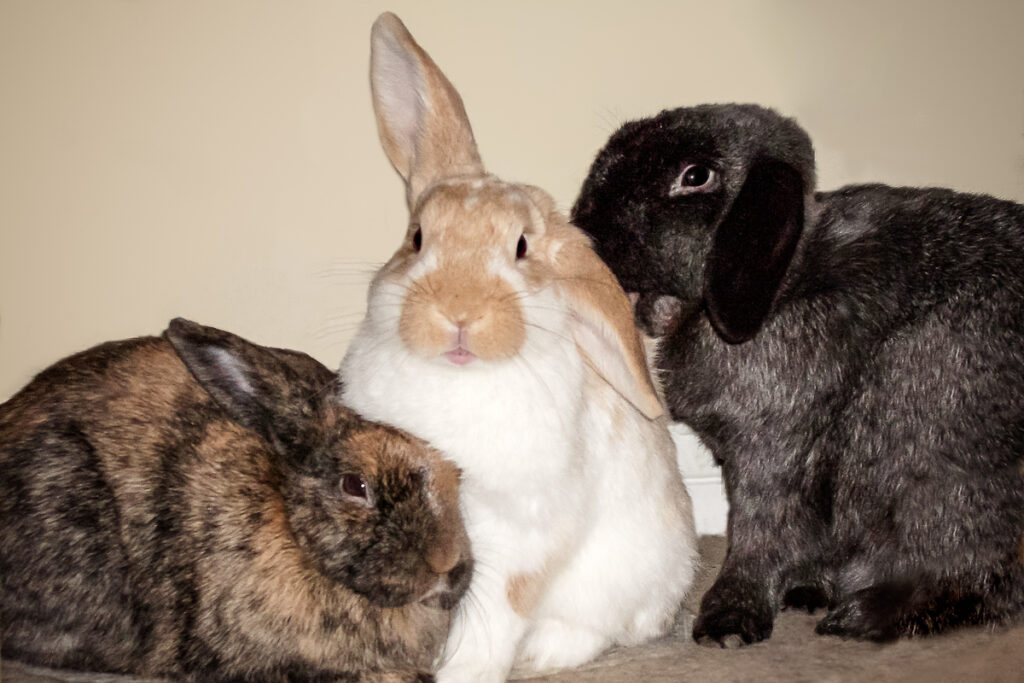While you consider what you want in a rabbit, consider also what you have to offer in yourself. Would your new bunny choose you? Take the following quiz to find out.
Self-Quiz
Furniture arrangements: Am I willing to make some compromises?
Vacuuming: Am I willing to vacuum a little more hair than I would in a rabbit-less home?
Bunny proofing: Will I take necessary safety measures to protect my bunny and my house?
Sense of humor: Do I have it?
Social time: Will plenty of social interactivity be available in my home?
Supervision: Will I supervise the activities of other animals or children around the bunny?
Relocation. Will I take my bunny with me when/if I change my residence?
Veterinary care: Will I take my bunny to the vet when he is sick or injured?
Education: Will I learn ‘rabbitspeake”?
SELECTION PROCESS
Your search for a rabbit usually begins with visits to animal adoption websites, followed by a visit to the physical locations. You may be attracted to a certain type of aesthetic appearance, but it’s highly advisable to pay attention to the personality descriptions listed by the adoption counselors, who have been trained in evaluating dispositions and matching them with compatible families. For instance, a meek and timid bunny might do fine with one or two individuals in a quiet home. A feisty, inquisitive bunny may be better able to tolerate the noise and activity level of a home with multiple family members of various ages.
It’s best that you don’t have too many preconceived notions as to breed, size, and age. No matter how gorgeous the bunny might be, it’s more important that your personalities and lifestyles are harmonious. Think first of the home you are providing and who would be happy there.
COMPANIONSHIP
Especially ff your house sits empty house all day, consider adopting a bonded pair. Two rabbits are no more bother than one, and they would keep each other company while you are away. Animal shelters and local rabbit rescue foster-volunteers are delighted to place already neutered and bonded pairs in good adoptive homes.
If you are adopting a single rabbit into a household with other animals, think about the kind of companionship your other animals can offer. Read chapter 4 to plan your careful, safe introduction.
A BUNNY FOR A BUNNY
Special considerations do need to be made in selecting a friend for another rabbit. Personality may be important here, but not size. Age is an issue only in meeting differing exercise needs in “May-December” matches. Since second adoptions are welcome at most shelters, the staff will often help with the matchmaking.
If a bonding pen is available and all rabbits are neutered/spayed, adopters can bring in their first rabbit to choose his or her own companion. The visiting rabbit may choose a different partner from what his humans had expected, but they usually defer to their bunny’s choice.
ADOPTING FROM A SHELTER
Bonding service is one of the many advantages you get when you adopt from an animal shelter or rescue group. You can get an already spayed or neutered rabbit, sometimes micro-chipped, and one who has perhaps already been socialized by volunteers. When you adopt from a shelter you ar directly or indirectly saving a life.
The adoptable rabbit cage, vacated by the bunny you bring home, is filled by one who might have been headed to euthanasia. That bunny will now have a chance at finding a home.
If you are not yet sure of your willingness or readiness to commit to an adoption, you might try volunteering at your local animal shelter, where you can learn about bunnies firsthand. Volunteers often bring in hay, vegetables, and loys and help socialize the bunnies. Shelters with a volunteer presence are able to get bunnies out of the cage to exercise in pens several times a week. Volunteering would provide you with an opportunity to get acquainted with different bunnies and even socialize them prior to bringing a bunny home.
Further Reading
- Deciding on a Rabbit (WabbitWiki)

